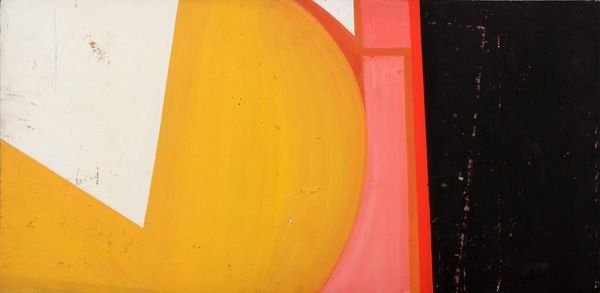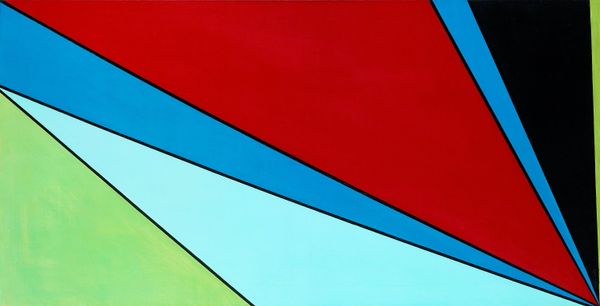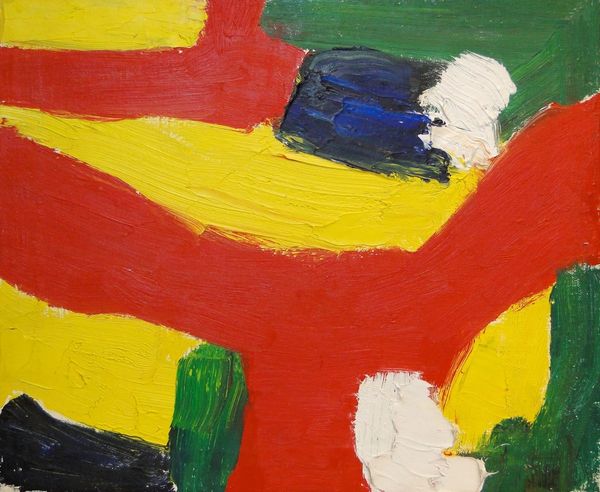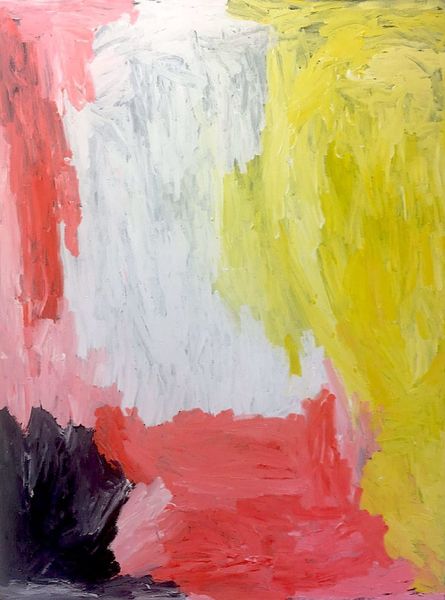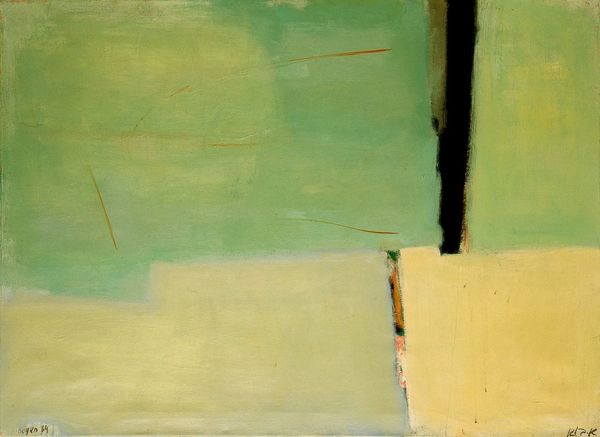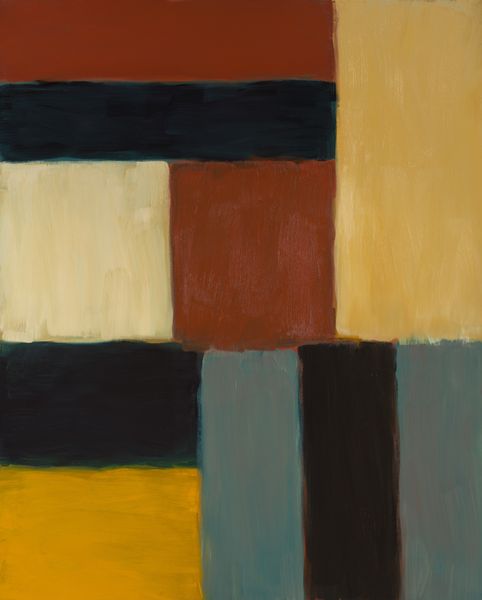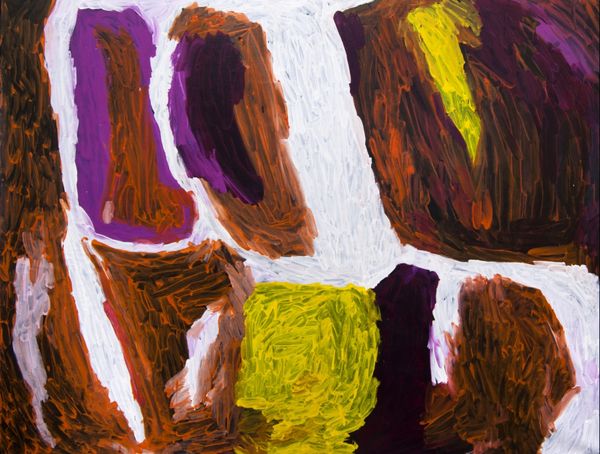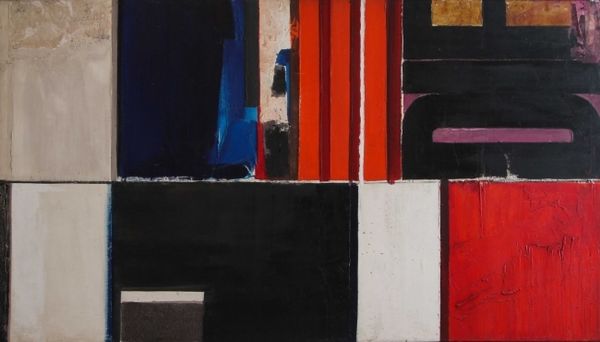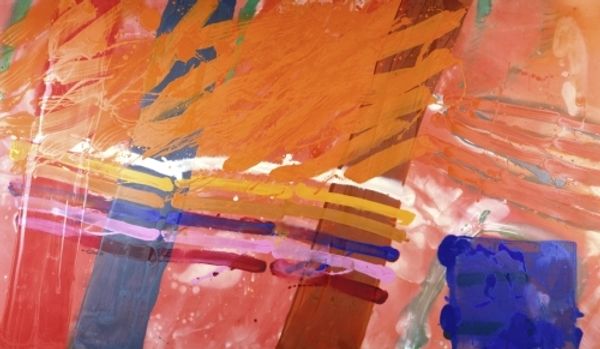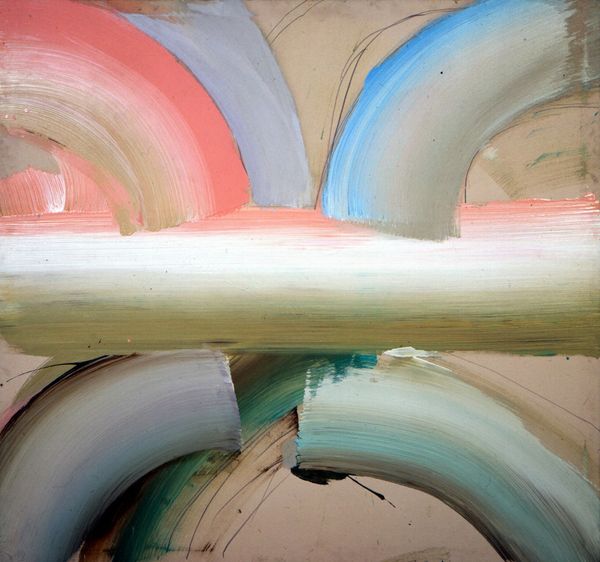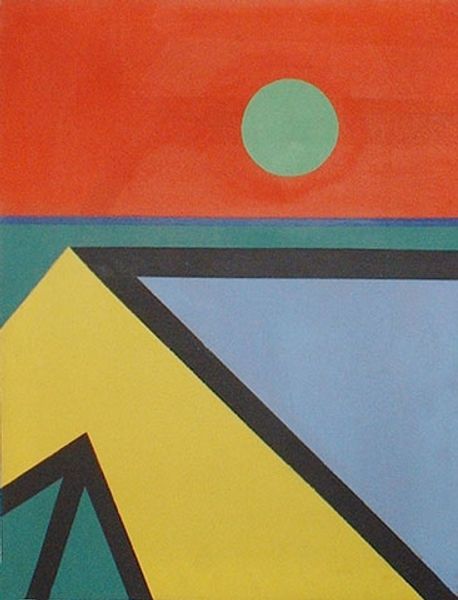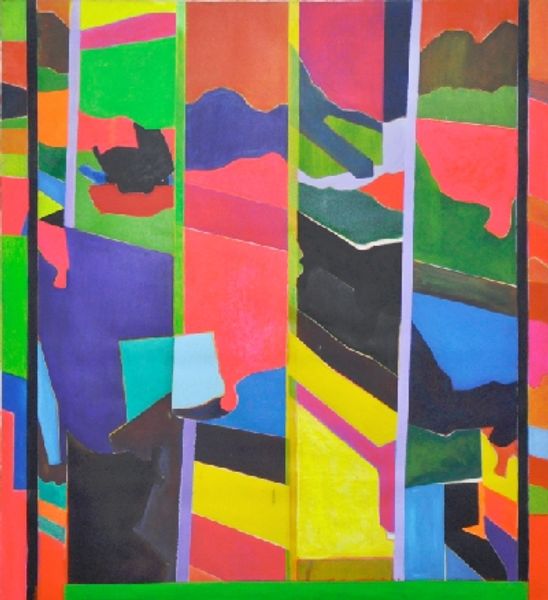
painting, acrylic-paint
#
painting
#
canvas painting
#
acrylic-paint
#
form
#
oil painting
#
acrylic on canvas
#
geometric-abstraction
#
abstraction
#
line
#
modernism
Dimensions: 95 x 55 cm
Copyright: Gil Nicolescu,Fair Use
Editor: So, this is Gil Nicolescu’s "Rezolvare Provizorie II (Echilibru)," created in 1971 with acrylic on canvas. The composition is strikingly simple—rectilinear shapes in red and green. I immediately get a feeling of precariousness, as though the forms are only momentarily balanced. What's your interpretation of the piece? Curator: The painting's title translates to "Provisional Resolution II (Balance)," which already hints at the temporary, the unresolved. In the context of 1971 Romania, under a highly controlled communist regime, the idea of provisionality speaks volumes. Do you think the artist may be critiquing the very notion of societal balance imposed from above, suggesting it's an illusion? Editor: That's an interesting perspective. I hadn't considered the socio-political implications. So, you see the unbalanced composition as a form of resistance, questioning the stability claimed by the government? Curator: Precisely. Abstraction becomes a powerful tool here. It's not overt propaganda, yet the formal choices—the tilted angles, the juxtaposition of potentially clashing colours—subvert the imposed order. Think about the historical avant-garde’s rejection of figurative art as a challenge to traditional power structures. This can also be framed in terms of a feminist reading—challenging imposed gendered and societal expectations through the abstraction of form. Editor: I see. It's fascinating how abstract forms can carry such weighty political and social commentary. So, the "provisional" aspect isn't just about aesthetic choices; it reflects the transient nature of political situations? Curator: Absolutely. It raises questions about permanence, truth, and the artist’s role within an oppressive system. The "balance" is a suggestion, not a statement of fact. This instability of line, form and colour creates space for discourse and new theoretical understandings. Editor: That's really made me reconsider the artwork's power and nuance. Thanks! Curator: Indeed. Hopefully it highlighted how even seemingly simple compositions can offer profound insights into complex societal realities when examined through the lenses of history, politics, and identity.
Comments
No comments
Be the first to comment and join the conversation on the ultimate creative platform.
